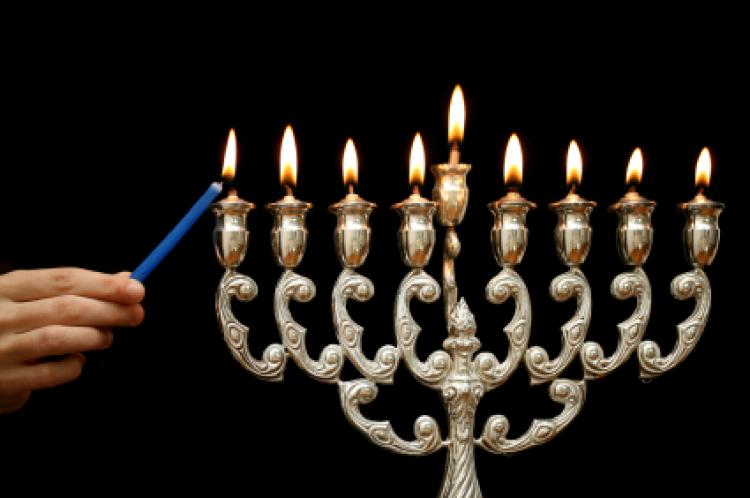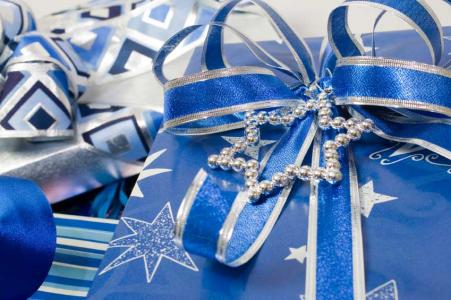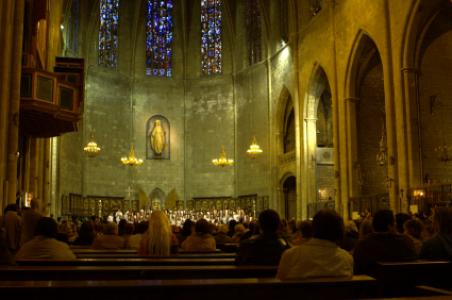
Saturn and Moon Meet in the Sky
Saturn and the Moon will meet up in the night sky for a close approach on November 10–11.
Many Jewish people in Australia mark the last day of Hanukkah as the end of the Hanukkah celebrations. Hanukkah, also known as the Festival of Lights, is an eight-day Jewish observance to remember the Jewish people's struggle for religious freedom.
Last day of Hanukkah is not a public holiday. Businesses have normal opening hours.

Candles are lit during Hanukkah.
©iStockphoto.com/Tova Teitelbaum
Many Jewish Australians conclude Hanukkah with the last day of Hanukkah, which is the eighth day of the Hanukkah festivities. The last day of Hanukkah is known as Zose Hanukkah, Zos Hanukkah or Zot Hanukkah. It is the second day of the month of Tevet and marks the day on which the great miracle of oil occurred, according to Jewish belief. It is a particularly special day because it encapsulates all of Hanukkah. The hanukiah, which is a type of candelabrum, is fully lit by the end of the Hanukkah period.
Many Jewish families in Australia get together to play traditional games, including games involving a toy known as the dreidel, and sing popular songs about Hanukkah. Some people give small gifts, such as flowers, to their loved ones throughout the Hanukkah period, including the last day of Hanukkah. Many people enjoy meals such as jam donuts and potato latkes, fried in oil, to remember the miracle of the oil that lasted for eight days. Various types of entertainment during Hanukkah include puppet shows, musical entertainment, and story-telling events.
The last day of Hanukkah is not a nationwide public holiday in Australia. Many Jewish schools have their school vacation fall around the same time of Hanukkah.
Hanukkah commemorates the Jewish people’s successful rebellion against the Syrians in the Maccabean War in 162 BCE. A ritual cleansing and re-dedication of the Temple occurred after the Jewish people’s victory. It is believed that there was only enough consecrated oil to keep the lamp burning for one day but the small bottle of oil miraculously lasted for eight days. Hanukkah, also known as Hanukkah, is referred as the Feast of Lights or Festival of Lights for this reason.
Moreover, the survival of Judaism over the many years is also celebrated during this period. Hanukkah is celebrated for eight days between the 25th day of the month of Kislev to the second day of Tevet in the Hebrew calendar. The first day of Hanukkah marks the start of eight-day Hanukkah period. It is marked as the 25th day of the month of Kislev in the Jewish calendar. The Hanukkah period ends on the second day of the month of Tevet. It is important to note that many Jewish observances begin at sunset on the day before.
The dreidel is a toy that is popular during the Hanukkah celebrations. It is a spinning top with a different Hebrew letter inscribed in each of its four sides – the four letters form an acronym meaning “a great miracle happened here”. The hanukiah (or chanukkiyah) is a type of candelabrum that holds eight candles to commemorate the eight days that the oil burned and a ninth candle that sits apart, known as the shamash, or servant candle that lights the others. One candle is lit on the first night, another on the second, and so forth until all candles are lit on the last night.
In the Jewish diaspora—Jewish communities outside of Israel—an extra day is usually added to religious observances, with the exception of Yom Kippur, which lasts only one day worldwide, and Rosh Hashana, which is celebrated over two days in both Israel and the diaspora.
This custom has its roots in ancient times when the beginning of the months in the Jewish calendar still relied on the sighting of the crescent Moon following a New Moon.
The beginning of a new month was determined by the Sanhedrin, the supreme court of ancient Israel in Jerusalem. Once the date was published, messengers were dispatched to spread the news among Jews living abroad. Since this process took some time, it was decreed that Jews outside of ancient Israel were to observe every holiday for 2 days to make sure that the rules and customs applicable to each holiday were observed on the proper date. This rule is still observed today.
Note: Jewish holidays begin at sundown the day before the date specified for the holiday.
| Year | Weekday | Date | Name | Holiday Type |
|---|---|---|---|---|
| 2019 | Mon | Dec 30 | Last day of Hanukkah | Jewish holiday |
| 2020 | Fri | Dec 18 | Last day of Hanukkah | Jewish holiday |
| 2021 | Mon | Dec 6 | Last day of Hanukkah | Jewish holiday |
| 2022 | Mon | Dec 26 | Last day of Hanukkah | Jewish holiday |
| 2023 | Fri | Dec 15 | Last day of Hanukkah | Jewish holiday |
| 2025 | Thu | Jan 2 | Last day of Hanukkah | Jewish holiday |
| 2025 | Mon | Dec 22 | Last day of Hanukkah | Jewish holiday |
| 2026 | Sat | Dec 12 | Last day of Hanukkah | Jewish holiday |
| 2028 | Sat | Jan 1 | Last day of Hanukkah | Jewish holiday |
| 2028 | Wed | Dec 20 | Last day of Hanukkah | Jewish holiday |
| 2029 | Sun | Dec 9 | Last day of Hanukkah | Jewish holiday |
While we diligently research and update our holiday dates, some of the information in the table above may be preliminary. If you find an error, please let us know.

Saturn and the Moon will meet up in the night sky for a close approach on November 10–11.

Your astronomical bucket list—the biggest sky and space highlights of the next half-century you can see with your own eyes.

The first day of Hanukkah is the start of the Hanukkah period, which lasts for 8 days, from the 25th day of the month of Kislev to the second day of Tevet in the Hebrew calendar.

All Souls’ Day is observed among some Christians in Australia on November 2 each year.